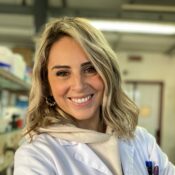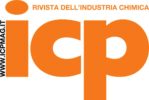Microfluidic production of biomimetic hybrid liposomes for personalized therapy
Time: 11:30 am - 12:00 pm
Date: 27 March
Theatre: Arena 4
Synopsis
Conventional nanoparticle (NP)-mediated drug delivery has made a dramatic contribution to the development of clinicalcancer therapy. However, NPs are exogenous materials, and early recognition by the immune system and clearance by theliver and kidney severely restrict the clinical applications of NPs. When NPs enter the body, they are first bound by proteinsthat make nanoparticles more recognizable by phagocytic cells. Subsequently, they are rapidly cleared by thereticuloendothelial system and mononuclear phagocytic system, which limits their delivery and distribution. For NPs toefficiently enter lesion sites, they need to evade clearance by the immune system. The most common method is to modify thesurface of NPs with polyethylene glycol (PEG). But simple surface functionalization cannot accurately simulate the complexinterface in the body and cannot avoid foreign body recognition and subsequent immune responses. NPs modified by cellmembranes (CM) represent an emerging biomimetic platform that can mimic the innate biological functions resulting from thevarious CMs in biological systems. Many research investigations have demonstrated the potential utility of biomimetic NPs inthe treatment of cancer. As a simple and effective approach, delivery vehicles consisting of CMs are extensively researchedand found to have various merits, such as prolonging the circulation time, alleviating immunogenicity, and accomplishingactive targeting. In our laboratories, we investigate the use of microfluidic technology to produce biomimetic hybrid liposomesby fusing synthetic lipids directly with CM obtained from different cancer cell lines. Specifically, a microfluidic sonicationstrategy for one-step and continuous generation of biomimetic hybrid liposomes is proposed to address the challenge of breaking the CM by purely hydrodynamic forces in microchannels. In two different case studies, the effective fusion of CMswith synthetic lipids is demonstrated, and the ability of the biomimetic nanosystems to exhibit homotypic targeting toward itsdonor cell line is proved.
Chairman
 Dimitrios Lamprou Queen's University Belfast
Dimitrios Lamprou Queen's University Belfast
Speaker
 Ilaria Arduino Department of Pharmacy-Pharmaceutical Sciences, University of Bari "Aldo Moro"
Ilaria Arduino Department of Pharmacy-Pharmaceutical Sciences, University of Bari "Aldo Moro"
« Back



















